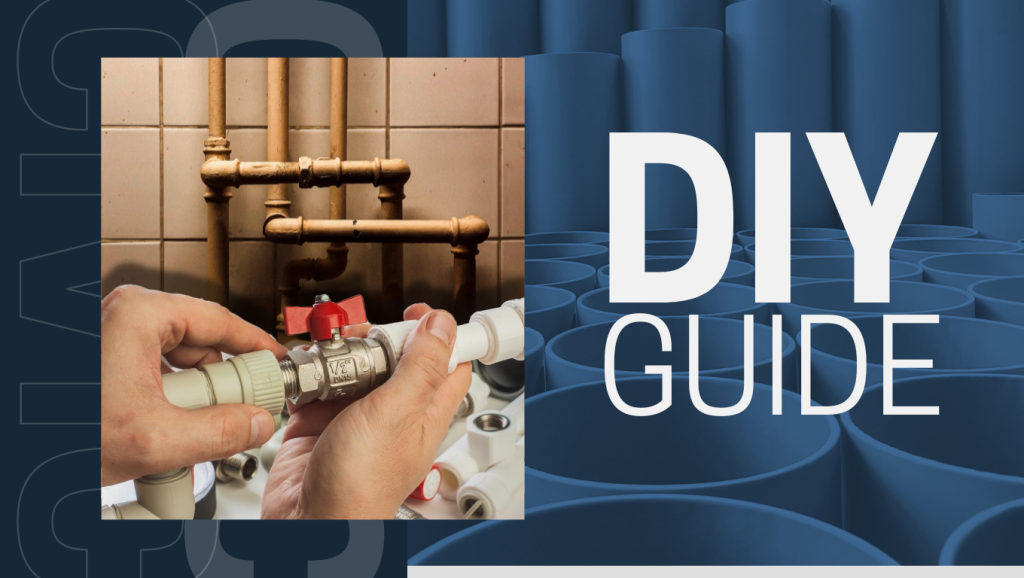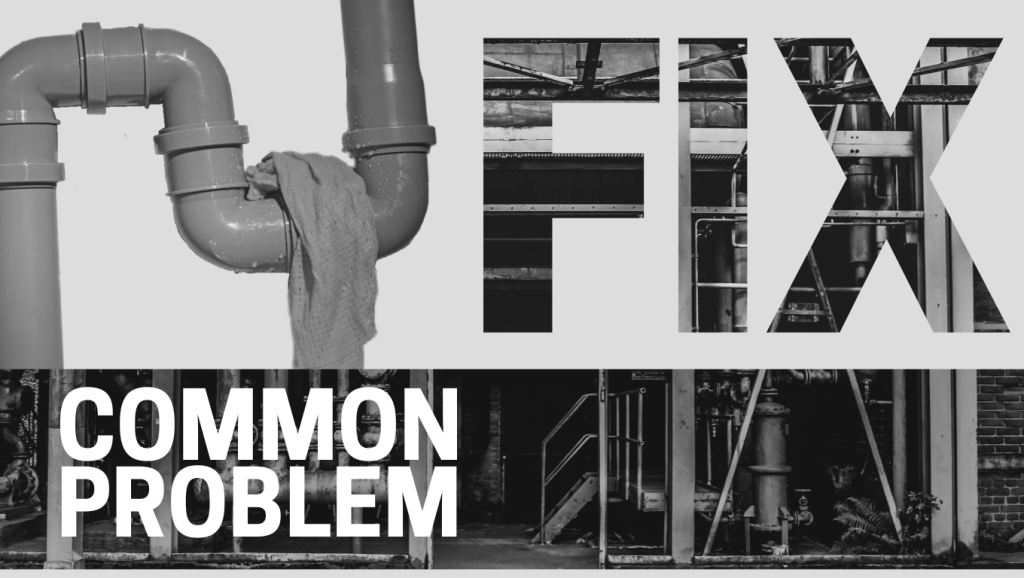- We're are currently open!
- Call our number today!
0410 790 630
Dealing with plumbing issues can be a hassle, but with the proper knowledge and a DIY approach, you can diagnose and address many common plumbing problems independently. Plumbing problems can arise due to various factors, including wear and tear, mineral deposits, blockages, corrosion, and faulty installation. Regular maintenance and prompt action can help prevent some of these issues.
While diagnosing common plumbing problems, it is crucial to follow specific precautionary measures to ensure your safety and prevent further damage to your plumbing system. Always turn off water supply valves when working on pipes, wear appropriate safety gear, and use the right tools.
By empowering yourself with this DIY guide, you can tackle common plumbing problems efficiently, save money on repair costs, and enjoy a well-maintained plumbing system throughout your home.

Dealing with plumbing issues at home can be daunting, but with the right tools and materials, you can confidently take on DIY plumbing repairs. Whether it’s a leaky faucet, a clogged drain, or a minor pipe issue, having the essential tools and materials at your disposal is crucial for successful and efficient fixes.
Here’s what you should prepare before getting started:
• Adjustable Wrench: For tightening or loosening various pipe fittings.
• Pipe Wrench: Specifically designed for turning and gripping pipes.
• Plunger: Essential for clearing clogged drains and toilets.
• Pipe Cutter: Used to cut pipes accurately during repairs or replacements.
• Auger/Snake: Helps remove stubborn blockages deep within lines.
• Screwdrivers: Both flathead and Phillips-head are handy for different fittings.
• Pliers: Useful for grasping and holding small components.
• Hacksaw: Allows cutting through metal pipes and other materials.
• Basin Wrench: Perfect for working in tight spaces under sinks.
• Caulking Gun: For sealing joints and preventing leaks.
• Pipe Sealant/Teflon Tape: To create watertight seals on threaded connections.
• Plumber’s Putty: Used for sealing sink drains and faucet fixtures.
• Replacement Washers, Gaskets, and O-rings: Often needed for faucet and valve repairs.
• Pipe Repair Clamp: A quick fix for small pipe leaks.
• Plumbing Epoxy: For sealing small cracks or holes in pipes.
• Drain Cleaning Chemicals: To dissolve grease and organic matter causing blockages.
• Replacement Parts: Depending on the issue, you might need to replace faucets, showerheads, or other fixtures.
Having these necessary tools and materials readily available will ensure you can handle common DIY plumbing issues effectively. Remember to take safety precautions and turn off the water supply when working on your plumbing system to avoid accidents and further damage. If you encounter complex or significant plumbing problems, it’s best to seek professional assistance to prevent potential complications.

A running toilet is a common plumbing issue where water continues flowing into the toilet bowl even when it’s not flushed. Additionally, there are several common flush problems that homeowners may encounter:
1. Continuous Running Water
Check the flapper valve for wear or misalignment. Adjust or replace the flapper as needed.
2. Weak Flush
Ensure the water level in the tank is at the proper level. Adjust the float or fill valve to increase water flow.
3. Double Flushing
Clean or replace the flapper valve and check the chain length to ensure it’s not catching.
4. Phantom Flushing (Ghost Flushing)
Inspect the fill valve and flush valve seal for leaks. Replace any faulty components.
5. Bowl Water Level Issues
Adjust the float or fill valve to achieve the correct water level in the bowl.
6. No Flush
Check the lift chain or lift arm connection to the flapper. Adjust or replace if necessary.
7. Slow Refilling Tank
Examine the fill valve for blockages and clean or replace it as needed.
Identifying the specific issue and implementing the corresponding solution to fix these common flush problems and stop your running toilet is essential. Regularly inspecting and maintaining your toilet’s components can help prevent these problems and ensure a smoothly functioning plumbing system.
Sump pumps are crucial in plumbing water treatment, especially preventing flooding and water damage. However, several factors can lead to sump pump failure, impacting their effectiveness in water management practices and conservation efforts.
• Power Outages: Sump pumps heavily rely on electricity, making power outages during storms a significant cause of failure, hindering proper water management.
• Lack of Maintenance: Infrequent maintenance, standard in plumbing water treatment systems, can result in clogs, debris buildup, and mechanical issues.
• Aging Pumps: As sump pumps age, their efficiency diminishes, reducing their effectiveness in water conservation and management practices.
• Switch Problems: Malfunctioning float switches can prevent the sump pump from activating when needed.
• Improper Installation: Incorrect installation may lead to improper functioning, hampering water management efforts.
• Frozen Discharge Pipes: In freezing temperatures, discharge pipes can freeze, causing water expulsion problems.
To ensure the sump pump’s effectiveness in plumbing water treatment and water conservation, homeowners should prioritize regular maintenance and consider installing battery backup systems to address power outage concerns. By addressing these common issues, sump pumps can efficiently contribute to effective water management practices and help conserve water in residential settings.
Drain blockages and household plumbing issues are common pipe problems that can cause inconvenience. The most frequent reasons for drain blockages include grease buildup, food particles, hair, soap scum, and mineral deposits.
To naturally unclog a drain, you can follow these steps:
• Boiling Water: Pour boiling water down the drain to break down grease and soap scum.
• Baking Soda and Vinegar: Sprinkle baking soda and vinegar into the drain. The chemical reaction helps dislodge debris.
• Salt and Hot Water: Mix salt with hot water and pour it down the drain to dissolve grease.
• Plunger: Use a plunger to create pressure and dislodge the blockage.
• Wire Hanger: Unravel a wire hanger and use it to fish out debris.
Adopting preventive measures and using natural remedies can effectively address common drain blockages without resorting to harsh chemicals, promoting smooth water flow and preventing further plumbing problems.
Sudden low water pressure can be frustrating in any household, affecting daily tasks and water-dependent activities. Several common causes of sudden low water pressure include:
• Water Leaks: Inspect all water pipes and fixtures for leaks, and repair any identified leaks promptly.
• Clogged Pipes: Use a mixture of vinegar and water or seek professional assistance to clean clogged pipes.
• Faulty Pressure Regulator: Adjust or replace the regulator to ensure the correct water pressure.
• Municipal Supply Issues: If the issue is from the municipal supply, contact the water utility company for further assistance.
By understanding the potential causes and taking appropriate actions, homeowners can effectively diagnose and fix sudden low water pressure issues, restoring adequate water flow and maintaining a functional plumbing system.
A hose bib, also known as an outdoor faucet or spigot, is a valve that connects hoses to a water supply, allowing for outdoor watering and other activities. However, hose bibs may develop leaks over time due to wear and tear or improper maintenance.
• Turn Off the Water Supply: Shut off the water supply to the hose bib by closing the corresponding valve.
• Inspect for Damage: Check for visible cracks, splits, or damage on the hose bib body and connections.
• Tighten Connections: Ensure all hose connections, packing nuts, and handle screws are tight.
• Replace Washers/O-rings: If the leak persists, replace the worn-out washers or O-rings inside the hose bib.
• Use Plumbing Tape: Apply plumbing tape to the threads for a better seal.
• Check for Freeze Damage: In colder climates, check for freeze damage that might have caused leaks.
• Consider Professional Help: If the problem persists, consult a professional plumber for a thorough inspection and repair.
With Civic Plumbing, you can be confident that your leaky hose bib will be fixed with precision and care, leaving you with a properly functioning outdoor faucet and conserving water. Don’t let a leaky hose bib cause unnecessary stress – contact Civic Plumbing today for reliable and efficient plumbing solutions.